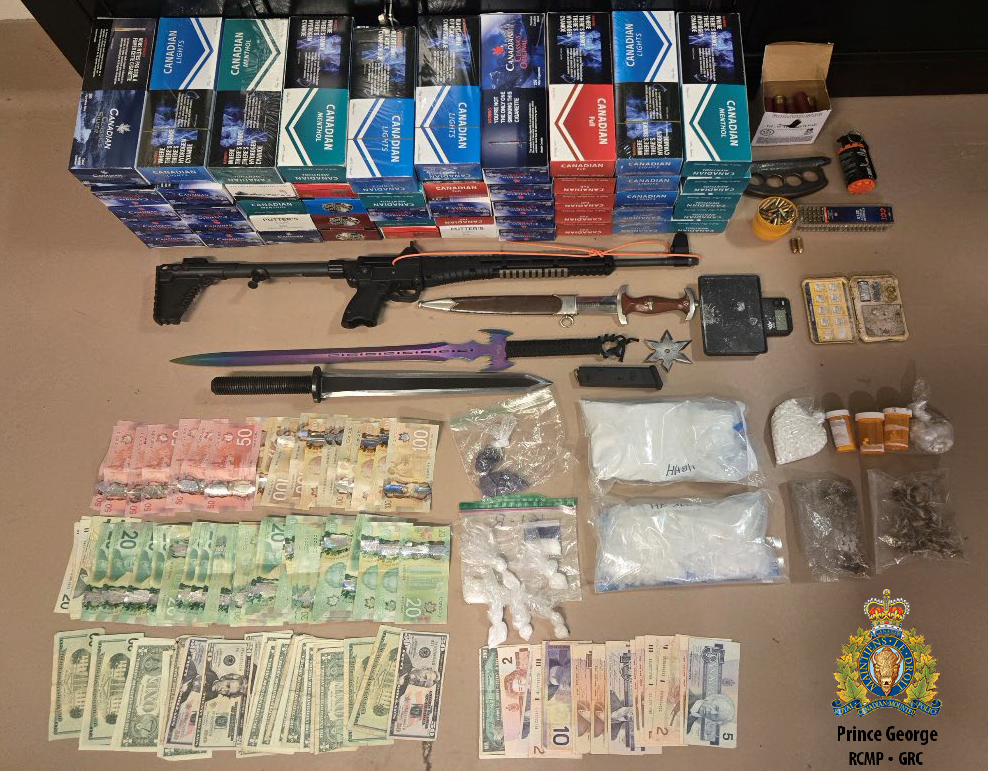ANALYSIS: Nine years into BC’s toxic drug health emergency
(Image courtesy of CBC)
On April 14, 2016, the BC provincial government declared a public health emergency after a significant jump in drug-related overdoses and deaths at the time. This was the first time a provincial health officer had served notice under the Public Health Act to exercise emergency powers and made BC the first province to take this action in response to a public health crisis from drug overdoses.
Under the Public Health Act, emergency powers allow health officers, on behalf of the province, to engage in acts that would normally be considered government overreach. This includes omitting any kind of information from reports or suspending licenses without any appeal process.
Now, nine years later, the emergency is still in effect, and there are still ongoing efforts to mitigate the damage, but resolving the crisis is still far away in many people’s minds.
According to the BC Coroners Service, an estimated 16,350 people have died since the crisis was announced, and no significant drop in numbers is expected for the end of 2025.
In the fall of 2024, the provincial government had estimated that a “historic” one billion dollars had been spent on managing the emergency so far, announcing an additional $215 million to continue service provision to combat the crisis.
Current provincial health officer Dr. Bonnie Henry released a statement on the ninth anniversary of the crisis being called, saying that “This sombre anniversary reminds us of the ongoing tragic impact of the toxic-drug crisis that is being felt by families and communities across BC” and that while there have been “glimmers of hope,” there is still much work to be done.
Coastal Front is here to provide a report and analysis on the state of this health emergency in 2025, bringing you all the key statistics and information that are necessary to know.
The Dominance of Fentanyl
(Image courtesy of Prince George RCMP)
In 2016, a major shift occurred in BC’s illegal drug usage and overdoses. Twenty-nine percent of the lethal illicit drug overdoses in the prior year of 2015 had fentanyl detected in them, the rate then rose to 67 percent in 2016, a staggering 38 percent increase in a single year.
The rates have shot up to and consistently stayed in the 80 percent range since 2016, which highlights the dominance of fentanyl in the illegal drug market.
Coastal Front spoke with Dr. M-J Milloy, a PhD epidemiologist working at the British Columbia Centre on Substance Use, to understand why this shift occurred and the factors that influenced it.
“It’s useful to think about fentanyl the same way we think about any other consumer product,” Milloy said, “fentanyl and other synthetic products have crucial advantages over [a drug like] heroin.”
“The primary one being that when you produce heroin, you in some ways need to control territory because you need to have farmers who are going to be growing opium poppies for you,” Milloy continued, “It's less attractive in many ways than fentanyl, which simply requires that you can acquire synthetic chemicals and combine them in a lab, you don't have to deal with farmers.”
Milloy also mentioned the frequently discussed potency and variability in taking fentanyl, further leading to its widespread use amongst illegal drug users, among other factors.
Kirsty Peterson, Executive Director at the Pacifica Treatment Centre, which specializes in abstinence-based treatment amongst other methods, also spoke to Coastal Front about the accessibility to fentanyl. “This was introduced into the drug supply as a way for people who were profiting from it to keep the price point the same,” she said, “this ensures they won’t get complaints about the drug quality as well.”
Peterson also mentioned the factor of fentanyl being cut into popular illegal “party” drugs that are commonly used in nightclubs as an explanation for its rapid rise in the illicit drug market.
The federal government states that fentanyl enters the Canadian illegal drug market in three different ways: illegally imported from other countries, produced from illegal laboratories in Canada, and theft of medical fentanyl products (mainly skin patches).
Important Statistics
(Image courtesy of BC’s Coroner Service)
Several notable statistics from BC drug overdose data help to understand the most at-risk demographics.
The age group most at risk for an unregulated drug overdose is typically in the range of 30-59 years. Across all ages, however, males by far make up the majority of unregulated drug overdoses, at minimum accounting for 74 percent of the total drug overdoses annually (with the average being in the 80% range).
“We know that [men] working in the trades, construction, or resource extraction have astronomically high rates of injury,” Dr. Milloy said, “I'm interested in the extent to which those occupations are causing substance use through physical and psychological injury. And individuals in these occupations face structural barriers to accessing treatment, for example.”
“It’s not only about pain relief or physical treatment, but also psychiatric care,” Milloy continued, questioning if the current psychiatric system is robust enough at engaging those who are at risk of an overdose. “To be frank, I don't know if they are,” he said.
Another group to look at is the First Nations demographic. The First Nations Health Authority reported in 2023 that individuals with First Nations backgrounds suffered from toxic drug poisoning 6.1 times the amount compared to other BC residents. Most concerning of all is the statistic that First Nations women are 11.7 times more likely to be at risk of an overdose than any other female demographic in the population, more than double the amount of risk First Nations men face (4.8 times).
A 2018 study postulated that factors like residential school experience, poverty, and inadequate access to education are influencing this rate of drug consumption in comparison to individuals from other backgrounds.
Treatment and the Future
(Image courtesy of CBC)
Over the years, the provincial government has employed a variety of initiatives in an attempt to combat the overdose crisis in BC. Safe supply, prescription alternatives, injection sites, and psychiatric addiction treatment are all methods that have been rigorously employed during BC’s overdose crisis.
However, some critics are concerned with the efficacy of these methods. According to the findings of a study published by JAMA Internal Medicine in 2024, there was a higher rate of hospitalizations during the first two years of the Safer Opioid Supply Policy implementation. The authors of the study said that the findings are “potentially concerning and suggest a need to carefully monitor how safer supply approaches influence opioid use, addiction, and overdose in the long term.”
Earlier this year, it was reported that a significant amount of BC’s safe supply was being funneled into the illegal drug market, which sparked fierce criticism and calls for reform. A total of $88 million was spent on addiction services in 2024 by the province.
“It's been a challenge for the province,” Dr. Milloy stated, “balancing the need for an alternative to the poison drug supply with the concerns that have been expressed around diversion and initiation of drug use.”
Peterson says that we need more access to voluntary treatment beds in the future to help alleviate the crisis. “I realize we're moving in the direction of involuntary, and I do think that that's very important,” she stated, “however, there's a three to four month wait for voluntary treatment beds, for the most severe cases in a lot of instances.”
Peterson also discussed the challenges of post-treatment life for a lot of the recipients, such as finding accessible housing or dealing with job insecurity, especially after their successful treatment. These factors increase the likelihood that someone could move back onto illegal, toxic drugs.
“We need to look at substance use as a continuum and to be able to offer a range of services to people,” Peterson said, “[in that area of] post-treatment when they need the support to be able to maintain whatever it is that they decide their relationship with substances is going to be after that.”





